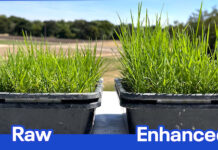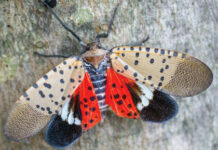Plants require water — sometimes a lot of water. Given that fact, it’s easy to assume they are net consumers of water in the landscape. But is this really true? Are water-stressed communities better off replacing planted landscapes with hardscape and artificial turf? Consider the following services plants provide:
- Shading. Trees and shrubs provide shade in the summer, which has a cooling effect and helps conserve soil moisture.
- Cooling. The process of transpiration also helps prevent heat build-up.
Read more: Turfgrass: Friend or Foe?
- Groundwater permeability. Planted areas provide the ideal permeable surface for runoff prevention and optimal recharging of aquifers. Plant roots penetrate deep into the soil. Most people understand that plants draw water up from the soil, but few realize that they are also loosening the soil and making it easier for water to percolate downwards.
- Water cycle. Plants — especially trees — play a critical role in the water cycle. This is the process by which water circulates between the earth’s bodies of water, atmosphere and land. The loss of plants from a regional landscape can result in a warmer, drier climate and desertification.
In addition to water-related benefits, plants and trees help improve air quality, are important tools for carbon sequestration, improve property and community aesthetics and can have significant stress-lowering effects on humans.
Connect with Turf Magazine: Like us on Facebook, Follow us on Twitter




























![[VIDEO] Dickies®: Discover Workwear That’s Anything But Uniform](https://turfmagazine.kinsta.cloud/wp-content/uploads/2023/06/1647663814-4b1a2a7742790a9b1e97a3b963477850192e1d6a9dfba9b07214a77bae25d6e3-d-324x160.jpg)


